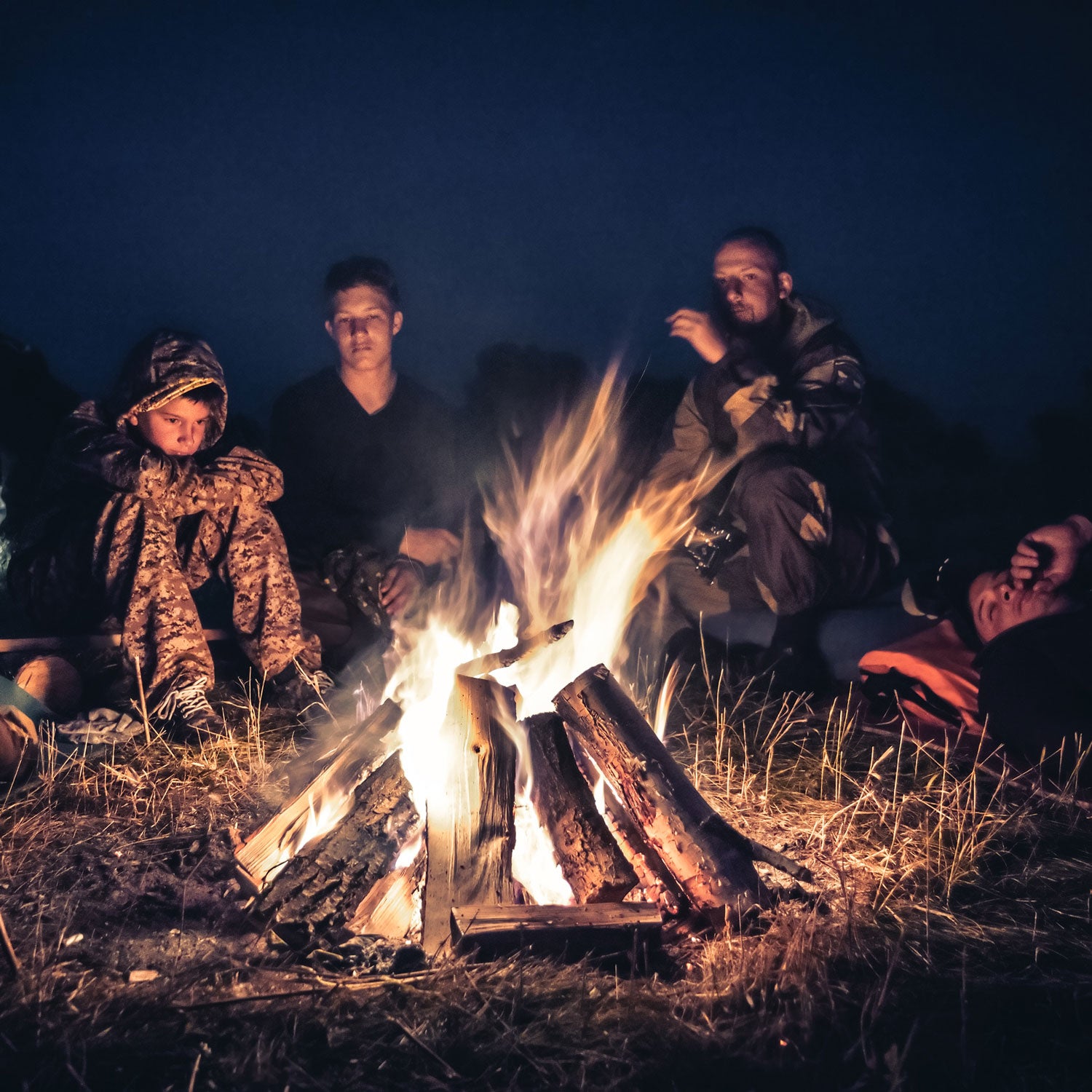The sun sank lower as we pushed our way up the steep slabs toward the summit of Mount Chocorua, a prominent 3,500-foot peak in the Sandwich Range of New Hampshire. We had missed our time goal, but the other two guides and I felt confident that we could safely get our team of eight teens to the summit and then back to camp after dark.
As we pushed on, I noticed John (his name has been changed for privacy), an out-of-shape 13-year-old whose program-issued blue T-shirt was drenched in sweat, wearing a pained expression. With each step, his breathing became heavier, and his peers pulled farther ahead. At the trail junction, less than a half-mile from the summit, he collapsed under the weight of his 50-pound pack. “I can’t do this anymore,” he said. “I can’t do this.”
The rest of the team sat nearby, waiting to be given the OK to move forward. They continued chattering about their favorite video games, the latest trending memes, and how they wished their phones had not been taken away when they arrived here.
Like all of his teammates, John struggled with depression, anxiety, and technology addiction. Before his parents sent him to —a wilderness therapy program based in rural Stow, Maine, where I work as a guide—John would spend hours locked in his bedroom, playing Fortnite, sending Snapchats, and cruising Instagram. Completing daily teen responsibilities, like attending middle school and spending time with his friends and family, eventually became so infrequent that his parents decided to send him to our program, which combines nature outings with clinician visits to address tech addiction, substance abuse, and emotional regulation.
Summit Achievement has been operating as a therapeutic wilderness school for teens ages 13 through 20 since the 1990s, but it’s only recently that we’ve seen such an influx of clients suffering from tech addiction. Parents are handing iPhones to their kids at a younger age. Much like with substance abuse, when adolescents are regularly using alcohol, drugs, or technology before their brains have fully developed, they’re more likely to become addicted.
Technology, like gambling, is understood as a risk for process addiction, where certain behaviors are rewarded with pleasure. People can become fixated on returning for that reward in a way that disrupts daily life. By that definition, says Will White, founder of Summit Achievement and author of , it’s clear that tech addiction is rampant in today’s society.
Technological dependence has been linked to mental health issues. In a 2018 study published by , researchers at the University of San Francisco surveyed 135 students about their smartphone use and its effect on their mental state. The researchers reported that screen time was linked to increased loneliness, anxiety, and depression. Another study, recently published in the , surveyed 15- and 16-year-olds and found a significant association between frequent social media use and symptoms of ADHD.
The World Health Organization now includes “” as a mental health condition in the 11th edition of International Classification of Diseases, released in June. For an individual diagnosed with a gaming disorder, gaming takes precedence over other daily activities, negatively affecting important aspects of life—social, personal, family, educational, and occupational—for a period of at least 12 months. While the current definition includes only gaming, many clinical social workers speculate that it will eventually be expanded to include other types of tech addiction, such as social media use. Meanwhile, experts are looking into treatments for this modern addiction and its effects.
A lack of physical activity and time spent outdoors has a demonstrable impact on levels of cortisol, the body’s main stress hormone.
That’s where nature comes in. The benefits of spending time outside are widely reported. In a 2016 study called , conducted by the University of Derby and the Wildlife Trusts, researchers asked 12,400 participants to engage with nature every day for a month. The results showed that simply spending time in nature has positive impacts on physical health, such as reduced hypertension and respiratory and cardiovascular illnesses, as well as improved mood and reduced anxiety. In Japan, “forest bathing” is increasingly popular. In the United States, some doctors and organizations are already prescribing time in nature.
A lack of physical activity and time spent outdoors has a demonstrable impact on levels of cortisol, the body’s main stress hormone. “Cortisol builds up when you have anxiety and remain inactive,” says Jill Jerome, a clinical social worker in Rockville, Maryland. “Technology contributes to this big-time. When you are on social media, you may feel anxious about someone having a better life than you, not getting enough attention, or getting too much attention. That is when cortisol is building. When you don’t have any way to burn it off, then you’re going to have more anxiety. When you’re out and moving, it starts to burn off.”
Wilderness therapy aims to tackle those compounding side effects by taking away the temptation of technology, increasing movement, and introducing the healing element of nature. While its origins can be traced back to the youth-focused summer camps of the 1800s, it wasn’t until 1922 that New York’s Camp Ramapo opened its doors specifically for emotionally challenged youth. Forty years later, two programs—Outward Bound USA and Brigham Young University’s “BYU 480 Class: Youth Rehabilitation Through Outdoor Survival”—provided a structure upon which many current wilderness therapy programs were built. Today, wilderness therapy generally looks more like camp with licensed clinicians. The clinicians help clients identify what’s driving their behaviors, while guides take clients—often teens and young adults—on multiday backpacking expeditions, boating or climbing trips, and other outdoor activities.
Summit Achievement isn’t the only program of its kind. There are 15 accredited wilderness therapy programs in the nation, plus dozens more wilderness-focused schools and courses. While most programs share a similar approach to address problems such as ADHD, depression, anxiety, and tech addiction, many differ from Summit in that they are considered full wilderness programs—there is no main campus to go back to each week. At Redcliff Ascent, for instance, students spend the entire duration of their stay—approximately ten weeks—sleeping under the stars and working with guides and clinicians in a remote backcountry setting.
At Summit Achievement, teens and young adults embark on a grueling recovery program that consists of a four-day backcountry expedition each week for an average of eight weeks, with three days of school, daily chores after each meal, weekly group and family therapy sessions, a mid-stay family visit, and zero screen time (except for an online academic curriculum catered to each student’s needs).
While enrolled in the program, students spend their time learning how to live without their smartphones and video games—as well as how to be self-sufficient, face anxiety, cope with depression and ADHD, build confidence, and socialize with peers. At the same time, clinicians conduct family therapy sessions, working toward rebuilding relationships back home.
I often watch new students walk onto our main campus in rural western Maine with a somber expression. Like John, many are teens who have rarely left the comfort of home and have just found out they will be spending much of the next six to ten weeks sleeping outdoors, with no access to the technology that has become an essential part of their lives. Their first few weeks are difficult, as they work on reflection of past behaviors and their consequences and towards acceptance of the program and the need for self-growth.
New students often keep to themselves initially, lacking the skills to interact with their peers and unable to fall back on the smartphones and video games they rely on so heavily. As they move through the program, they focus on specific themes of acceptance, commitment, accountability, initiative, empathy, and transition. They also learn hard skills like setting up a tarp, navigating, and cooking on a camp stove.
I watch students discover—with the help of guides and clinicians—healthy coping mechanisms that allow them to push through situations that they could have never imagined before. By the end of their stay, students will often have the confidence to encourage their teammates, teach hard skills, and provide emotional support to newer members of the team.
On Mount Chocorua, we spent 20 minutes with John, practicing the tactical breathing exercises that he’d been learning to use as a coping mechanism. Soon we were able to press forward toward the top. An eruption of celebratory cheers rippled through the group of teens who finally stood atop Chocorua, congratulating John and each other as we watched the sunset.
It was John’s first summit. After months of hardly leaving his house, he was finally surrounded by a view he never thought he’d see beyond his Instagram feed.


